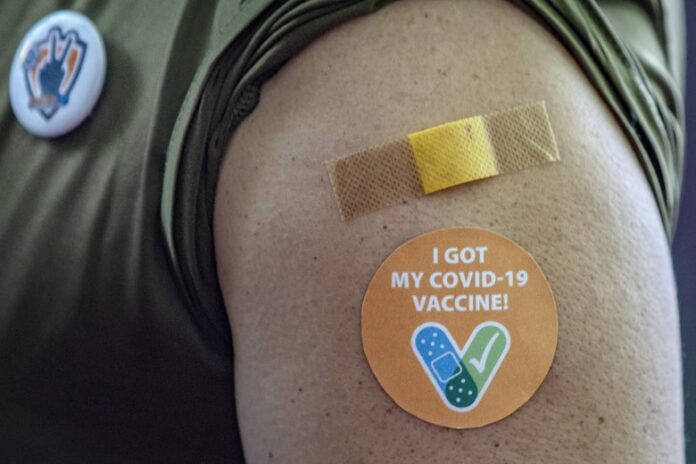I have received two doses of the Pfizer mRNA vaccine and expect I will get a booster dose sometime early in December. I continue to practice social distancing, washing my hands after every time I go out, wearing a mask when indoors but not in our apartment, and not taking undue risks of exposure by limiting going into stores and buildings. Am I paranoid about COVID-19? A little bit!
When I contracted COVID-19 back in April 2020 it infected my heart and has left it damaged. I’m still working through the process of finding a permanent fix. So I think I’m justified in my zeal not to be reinfected. But reinfections among fully inoculated individuals are being reported daily. Two weeks ago, 35.6% of COVID-19 cases in Ontario were happening to fully vaccinated people.
In a CTV News report published on October 28, 2021, author Katherine DeClerq spoke with Dr. Sumon Chakrabarti, an infectious disease specialist at Trillium Health Partners in Mississauga, Ontario. Chakrabarti stressed that these breakthrough infections were to be expected and that “when you look closely, these people…have a runny nose….a little bit of a cough and that’s it.” Chakrabarti went on to point out that in Ontario, the number of unvaccinated is now small and thus the breakthrough infections of the vaccinated seem like a disproportionately higher than normal number.
Dr. Anna Banerji, an infectious disease specialist with the University of Toronto’s Dalla Lana School of Public Health, points out that that 35.6% number is misleading because vaccinated versus the unvaccinated are “not equal groups. There’s a much larger group of vaccinated people so you’re going to get, even if the risk is the same, you’re going to get much higher rates of infection because there’s just more people to infect. You have to look at the proportion.”
Data tracking intensive care unit (ICU) hospitalizations show that Chakrabarti’s initial comment doesn’t always paint a correct picture. In Ontario during the same period of reporting for the CTV News article, of the average number of people in ICUs, 70.6 were unvaccinated, 5.8 had received one dose, and 19.2 were fully vaccinated. Of those in the ICU who were double vaccinated, the majority had previous underlying health issues of significance.
A JAMA Network editorial appearing on November 4, 2021, written by Dr. Michael Klompas, affiliated with both Harvard Medical School and Brigham and Women’s Hospital, in Boston, Massachusetts, quotes numbers eerily similar to those appearing in Ontario. He cites data from October 21, 2021, showing 35% of the 519 hospitalized patients in Massachusetts as of that date were fully vaccinated. He goes on further to state “that even though fully vaccinated people remain at risk for SARS-CoV-2 [COVID-19] infection, they are substantially less prone to carry SARS-CoV-2 compared with unvaccinated people.” He cites comparable data from the United Kingdom which experienced a surge in new cases in the spring of 2021 when the new variant of COVID-19, known as Delta, rapidly spread through the country’s population.
The research on viral dynamics is rather interesting when comparing breakthrough infections with those happening to the unvaccinated. Although viral loads in both at the beginning of the infection are similar, in the fully vaccinated the decline is rapid. This means that people suffering from breakthrough infections who are fully vaccinated pose less of a contagion threat to the general population.
A Dutch study of 7,771 households with 4,921 cases showed that rates of transmission from the fully vaccinated were 13% compared to 22% for the unvaccinated. A UK study of 151,821 contacts with 99,567 patients compared transmission rates between fully vaccinated versus unvaccinated at 23 and 49% respectively.
Looking at data such as what I have described above should provide some reassurance to people like me who have been fully vaccinated and have concerns about the level of transmission from COVID-19’s Delta variant. One thing that should be noted is how much the interval between first and second doses of the vaccine makes us less vulnerable to reinfection.
When the vaccines first came out the recommended interval between first and second injections was pretty short (less than a month for both mRNA vaccines). The determining factor for this may have been the speed of the initial clinical trials as a response to the global pandemic crisis, rather than taking the time to do a thorough analysis of how our immune systems would adjust and build resistance to the virus.
But we now have significant data that can help us to improve prevention and treatment. One thing we have learned is that the spacing between the administration of the two mRNA vaccine doses can extend our immune system’s ability to resist COVID-19 far longer. It is the knowledge gleaned from this observation that is leading to adding a booster shot to the protocol. The third dose will likely prevent hospitalizations for those most vulnerable within our populations even if subjected to a breakthrough infection in the future.
















